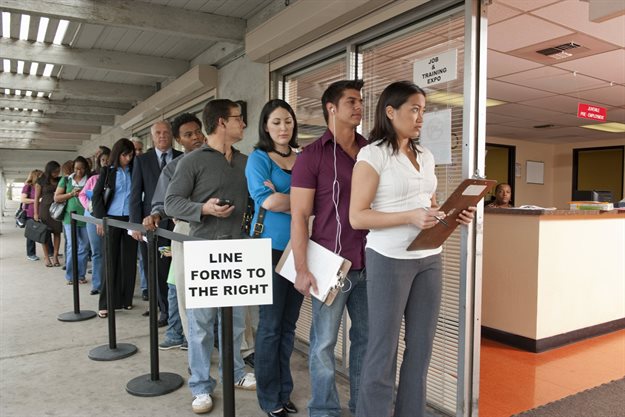Unemployment in South Africa has soared to 30.8% in the last three months, the Quarterly Labour Force Survey (QLFS) for the third quarter of 2020 revealed.

Image source: Getty Images
The rise was a 7.5% increase from the second quarter. This comes after Stats SA in September reported that despite the South African economy shedding 2.2 million jobs due to the Covid-19 lockdown, unemployment in the country dropped to 23.3% in the second quarter of 2020.
According to the report, released by Statistics South Africa (Stats SA) on Thursday, “The number of employed persons increased by 543,000 (3.8%) to 14.7 million compared to the second quarter of 2020. Unemployment increased substantially by 2.2 million (52.1%) to 6.5 million compared to quarter 2 of 2020 resulting in an increase of 2.8 million (15.1%) in the number of people in the labour force.”
The national statistics service in the report said the number of discouraged work-seekers increased by 225,000 (9.1%), while the number of people who were not economically active for reasons other than discouragement decreased by 2.9 million (15.8%) between the two quarters. This, Stats SA said, resulted in a net decrease of 2.6 million (12.8%) in the not economically active population.
The unemployment rate according to the expanded definition of unemployment increased by 1.1 percentage points to 43.1% in quarter 3 of 2020 compared to quarter 2 of 2020.
Increasing employment figures
However, the survey noted that employment increased in all sectors in the third quarter.
In this regard, formal sector employment increased by 242,000 (2.4%) while informal sector employment increased by 176,000 (7.7%).
“Private households increased by 116,000 (11.5%), [while] employment in Agriculture increased by 9,000 (1.1%),” reads the report.
The document also notes that employment increased in all industries, except utilities and transport. The industries which gained the more jobs were finance (200,000), community and social services (137,000) and private households (116,000).
Compared to quarter 3 of 2019, said the agency, employment contracted in all industries except mining where it remained unchanged in the quarter under review.
Job losses
Stats SA added that most job losses were observed in trade (400,000), manufacturing (300,000), community and social services (298,000) and construction (259,000).
“To capture changes brought about by the national lockdown, the additional questions that were included in Q2: 2020 questionnaire were also included in Q3: 2020. The results indicate that, of the 14.7 million persons who were employed in Q3: 2020, more than seven out of ten people (73.2%) were expected to work during the national lockdown by the companies/organisations they work for,” reads the report.
Stats SA said those who actually worked were predominately men in most industries, except in the community and social services sector and private households, where the majority were women. “About nine out of ten people employed within the Construction industry who worked during the lockdown, were men,” reads the report.
Those who were expected to work in the reference week during the national lockdown but could not do any work during that period indicated the national lockdown as the main reason for not actually working (71.7%).
Compared to the second quarter of 2020 where 17.0% indicated that they worked from home, this proportion declined to 10.9% in the third quarter of 2020. Working from home was more prevalent in Gauteng and Western Cape and among Professionals and Managers.
The agency added that the majority of those in employment continued to receive pay during the lockdown. However, those with lower levels of education were more likely to receive reduced salaries than those with higher levels of education.


















